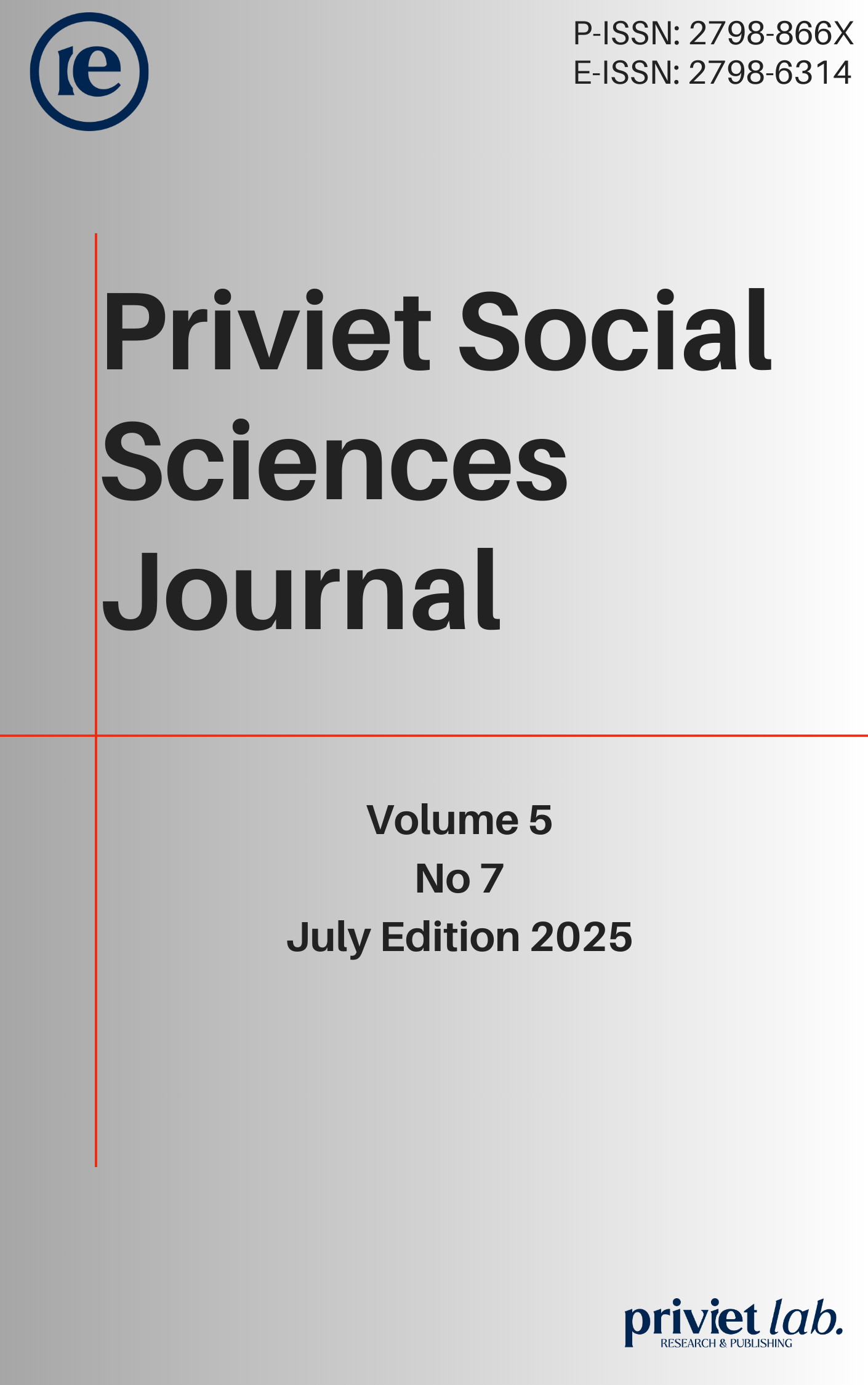Monumental memory and identity formation in the Butonese community through the Oputa Yi Koo Monument
DOI:
https://doi.org/10.55942/pssj.v5i7.488Keywords:
collective memory, Oputa Yi Koo, monument, cultural identity, ButonAbstract
This study investigates the role of the Monument of Sultan Himayatuddin Muhammad Saidi (Oputa Yi Koo) in shaping collective memory and social identity among the Butonese community in Baubau, Southeast Sulawesi, Indonesia. Utilizing a qualitative descriptive approach grounded in Maurice Halbwachs' collective memory theory, this study explores how spatial representation, symbolic design, and everyday social practices interact to produce and sustain collective memory. Data were collected through direct observations, visual documentation, and in-depth interviews with local cultural leaders, government officials, and residents. The findings reveal that the monument serves as a socio-symbolic artifact that revives marginalized historical narratives and provides a platform for communal reflection. It becomes a site where the past is reconstructed through present-day needs, reinforcing group identity, while remaining open to reinterpretation and contestation. While many perceive the monument as a source of pride and cultural revival, divergent interpretations of official narratives and community-based memory highlight the collective remembrance's dynamic, negotiated nature. This study argues that monuments are not merely passive heritage objects, but active discursive spaces that mediate identity formation, historical consciousness, and symbolic politics. This research contributes to broader discussions on cultural memory, spatial politics, and heritage making, offering practical insights for inclusive public space design rooted in local historical consciousness.
References
Alderman, D. H., & Dwyer, O. J. (2009). Memorials and Monuments. International Encyclopedia of Human Geography: Volume 1-12, 1–12, 51–58. https://doi.org/10.1016/B978-008044910-4.00974-3
Assmann, J. (2011). Cultural Memory and Early Civilization: Writing, Remembrance, and Political Imagination. Cultural Memory and Early Civilization: Writing, Remembrance, and Political Imagination, 1–319. https://doi.org/10.1017/CBO9780511996306
Chalmers. (2019). Settled Memories on Stolen Land: Settler Mythology at Canada’s National Holocaust Monument. American Indian Quarterly, 43(4), 379. https://doi.org/10.5250/AMERINDIQUAR.43.4.0379
Connerton, P. (1989). How Societies Remember. How Societies Remember. https://doi.org/10.1017/CBO9780511628061
Cudny, W., & Appelblad, H. (2019). Monuments and their functions in urban public space. Norsk Geografisk Tidsskrift - Norwegian Journal of Geography, 73(5), 273–289. https://doi.org/10.1080/00291951.2019.1694976
Edensor, T. (2005). Industrial Ruins. Industrial Ruins. https://doi.org/10.5040/9781474214940
Foote, K. E., & Azaryahu, M. (2007). Toward a geography of memory: Geographical dimensions of public memory and commemoration. Journal of Political and Military Sociology, 35(1), 125–144.
Forest, B., & Johnson, J. (2002). Unraveling the Threads of History: Soviet–Era Monuments and Post–Soviet National Identity in Moscow. Annals of the Association of American Geographers, 92(3), 524–547. https://doi.org/10.1111/1467-8306.00303
Halbwachs, M. (1992). On Collective Memory.
Jelin, E. (2003). State Repression and the Labors of Memory.
Kabachnik, P., Gugushvili, A., & Kirvalidze, A. (2020). What about the Monument? Problems of Post-Communism, 67(3), 264–276. https://doi.org/10.1080/10758216.2018.1540276
Kusno, A. (2021). The Appearances of Memory. The Appearances of Memory. https://doi.org/10.2307/J.CTV120QRC2
Lukman, A. (2020). Disonansi Memori Monumen Kolonial: Studi Kasus Tugu Cornelis Chastelein, Depok, Jawa Barat. Amerta, 38(1), 77–92. https://doi.org/10.24832/amt.v38i1.77-92
Nora, P. (1989). Between Memory and History: Les Lieux de Mémoire. Representations, 26, 7–24. https://doi.org/10.2307/2928520/82272
Olick, J. K. (2013). The Politics of Regret: On Collective Memory and Historical Responsibility. The Politics of Regret: On Collective Memory and Historical Responsibility, 1–229. https://doi.org/10.4324/9780203941478
Pieris, A. (2012). Abidin Kusno, The Appearance of Memory: Mnemonic Practices of Architecture and Urban Form in Indonesia. Durham: Duke University Press, 2010. Comparative Studies in Society and History, 54(3), 714–715. https://doi.org/10.1017/S0010417512000321
Reid, A. 1939-, author. (2005). An Indonesian frontier: acehnese and other histories of Sumatra. https://lib.ui.ac.id
Smith, L. (2006). Uses of Heritage. Uses of Heritage, 1–351. https://doi.org/10.4324/9780203602263
Syahadat, Arifin, N. H. S., & Arifin, H. S. (2014). Public Perception on Historical Landscape of Ethnic Immigrant Heritage in Heritage City of Baubau. Komunitas, 6(2), 312–319. https://doi.org/10.15294/KOMUNITAS.V6I2.3310
Till, K. E. . (2005). The new Berlin : memory, politics, place. 279.
Yin Robert. (2018). Case Study Research and Applications | SAGE Publications Inc. Sixth Edition, 282. https://us.sagepub.com/en-us/nam/case-study-research-and-applications/book250150
Downloads
Published
How to Cite
Issue
Section
License
Copyright (c) 2025 Muhamat Arif Afandi, Febriansyah Febriansyah

This work is licensed under a Creative Commons Attribution 4.0 International License.

















